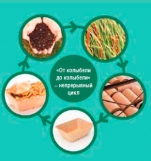Design as a Tool of Updates

Green architect and coauthor of the pivotal green design handbook ‘Cradle to Cradle’, William McDonough is one of the founders of the green design movement and one of the preeminent thoughtleaders of our time. The journalist and writer Andrew Michler, the consultant in the field of construction of the passive houses, carrying a certificate of LEED AP BD + C, met him to talk about safe materials and the products environmentallycertified in ‘Cradle to Cradle’ system. This is a standard that defines the sustainability of the products, materials and technologies.
William, tell us what inspired you to write ‘Cradle to Cradle‘(the book) and launch the Cradle to Cradle system?
From an early age, I was fascinated by differing attitudes towards resources. Growing up in Japan and Hong Kong, I was given my first look at complete material cycles, where waste becomes food, and resources like water are limited and precious. This contrasted greatly with the wastefulness I witnessed when my family moved to the United States, and that difference in attitude left a great impression on me. As a young architect, my thinking continued to evolve. I incorporated elements like solar energy into my designs and began to look closely at the sourcing of materials, but Cradle to Cradle really came to fruition when I met Dr. Michael Braungart. Together we developed the Cradle to Cradle philosophy, which we articulated in Cradle to Cradle: Remaking the Way We Make Things, which came out in 2002.
Can you explain how the Cradle to Cradle rating system works – both from the perspective of manufacturers and consumers?
Cradle to Cradle products Certification goes beyond the definition of a rating system or a binary pass/fail seal of approval. Cradle to Cradle is a process for managing the total quality of a product and an engine for business innovation, taking into consideration not only environmental impact but also safety, health and social responsibility. The certification is a continuous and rigorous process, and participating companies hope to move their Basic products toward the achievement of Gold, Silver or Platinum. No single company product has yet achieved Platinum. Certification takes into account five dimensions: materials as nutrients for safe continuous cycling; development of systems to safely close the loop on our biological and technical nutrients; power all operations with 100% renewable energy; regard water as a precious resource; and finally respect for all people and natural systems.
Full content of this issue you can read here
The full version of the article can be read in our printed issue, also you can subscribe to the web-version of the magazine
 Interviewed by Andrew Michler
Interviewed by Andrew Michler


